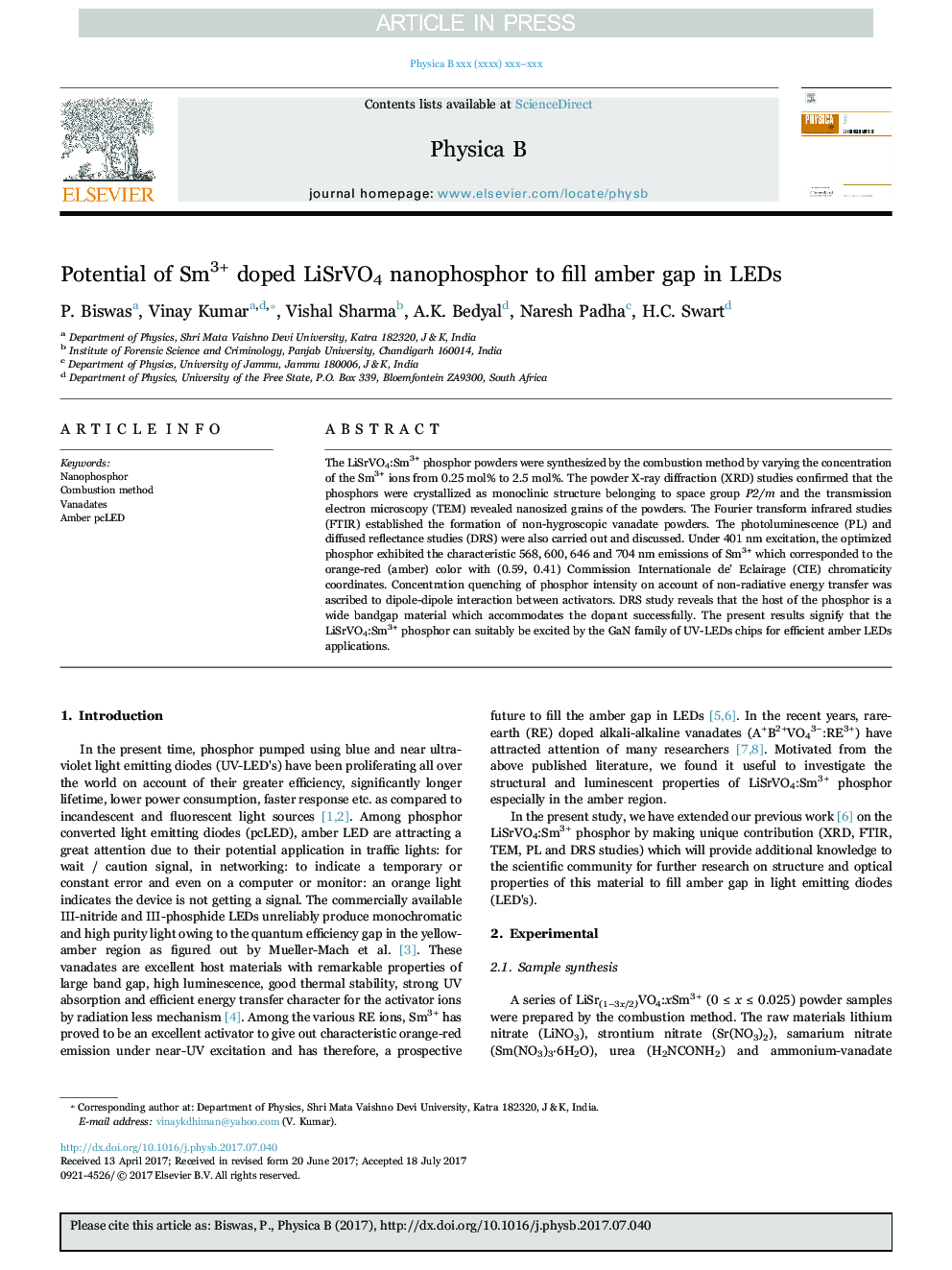| Article ID | Journal | Published Year | Pages | File Type |
|---|---|---|---|---|
| 8161203 | Physica B: Condensed Matter | 2018 | 6 Pages |
Abstract
The LiSrVO4:Sm3+ phosphor powders were synthesized by the combustion method by varying the concentration of the Sm3+ ions from 0.25Â mol% to 2.5Â mol%. The powder X-ray diffraction (XRD) studies confirmed that the phosphors were crystallized as monoclinic structure belonging to space group P2/m and the transmission electron microscopy (TEM) revealed nanosized grains of the powders. The Fourier transform infrared studies (FTIR) established the formation of non-hygroscopic vanadate powders. The photoluminescence (PL) and diffused reflectance studies (DRS) were also carried out and discussed. Under 401Â nm excitation, the optimized phosphor exhibited the characteristic 568, 600, 646 and 704Â nm emissions of Sm3+ which corresponded to the orange-red (amber) color with (0.59, 0.41) Commission Internationale de' Eclairage (CIE) chromaticity coordinates. Concentration quenching of phosphor intensity on account of non-radiative energy transfer was ascribed to dipole-dipole interaction between activators. DRS study reveals that the host of the phosphor is a wide bandgap material which accommodates the dopant successfully. The present results signify that the LiSrVO4:Sm3+ phosphor can suitably be excited by the GaN family of UV-LEDs chips for efficient amber LEDs applications.
Related Topics
Physical Sciences and Engineering
Physics and Astronomy
Condensed Matter Physics
Authors
P. Biswas, Vinay Kumar, Vishal Sharma, A.K. Bedyal, Naresh Padha, H.C. Swart,
